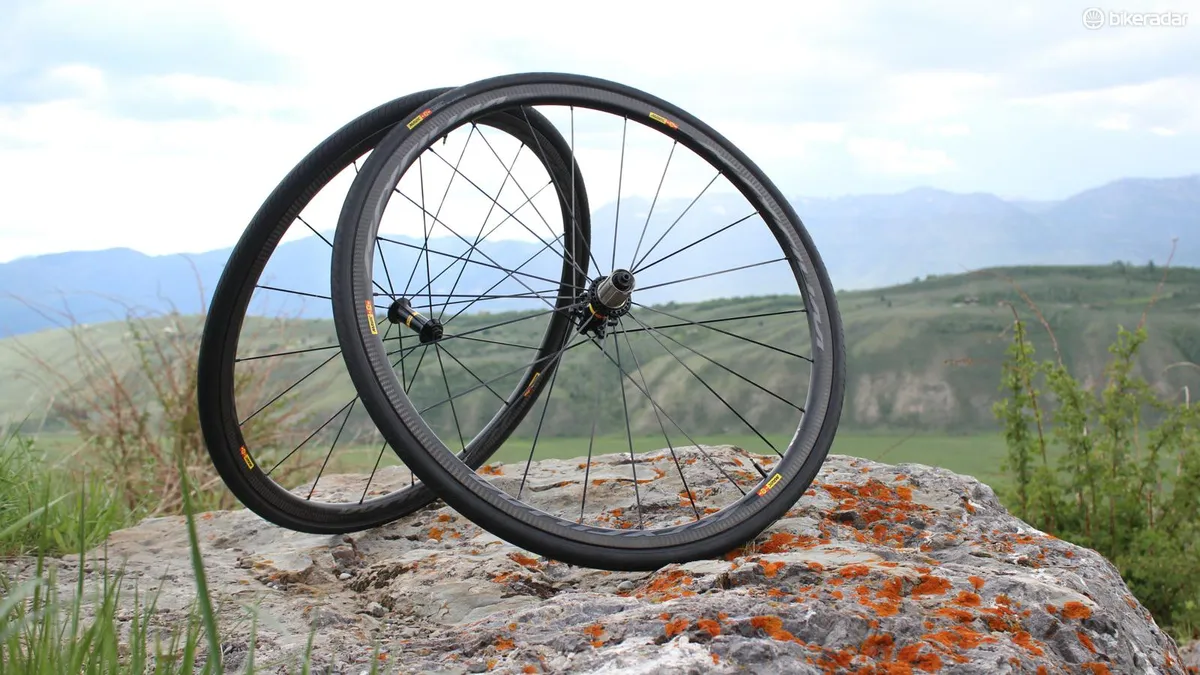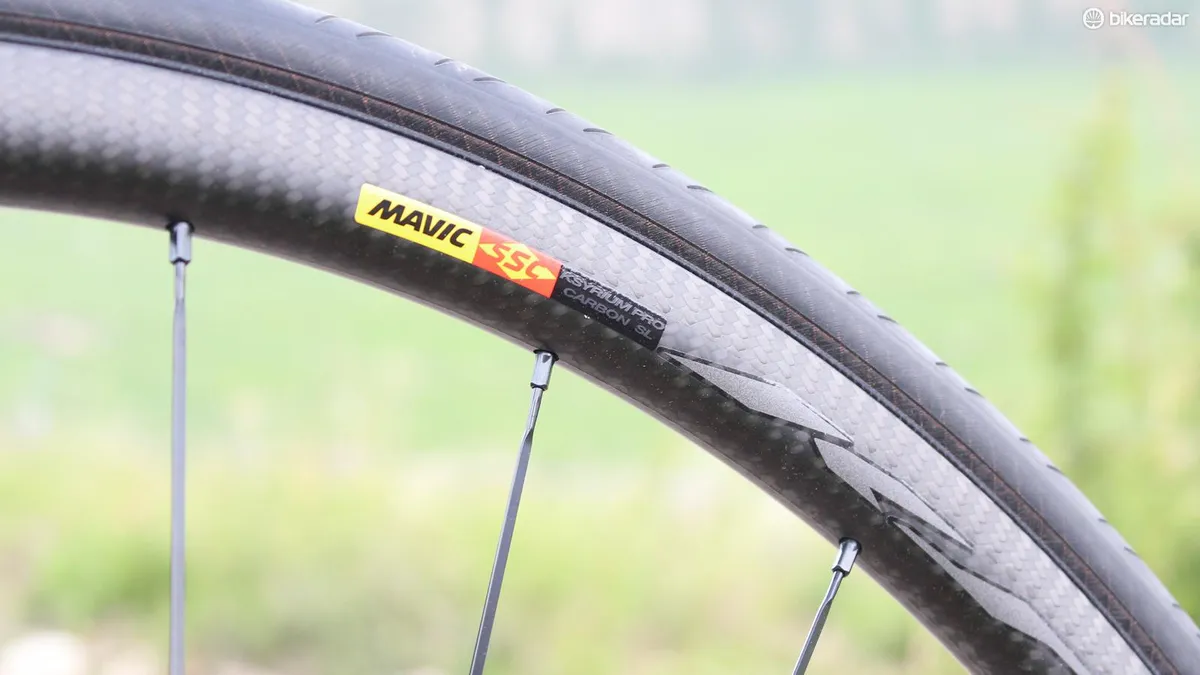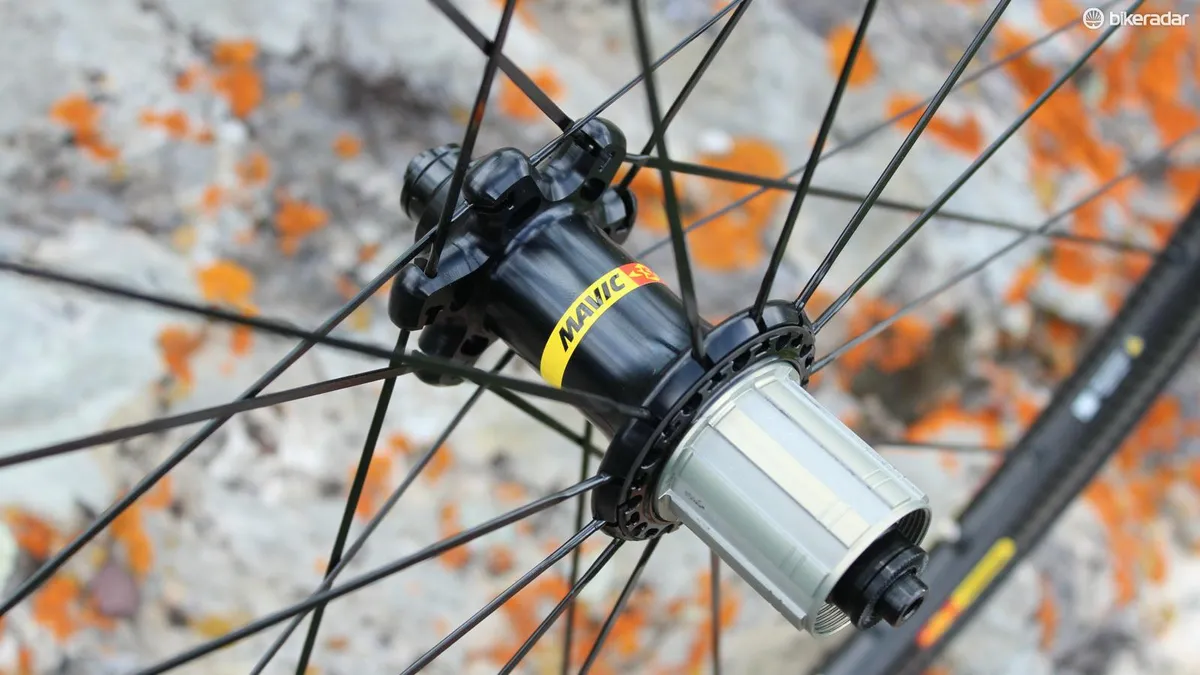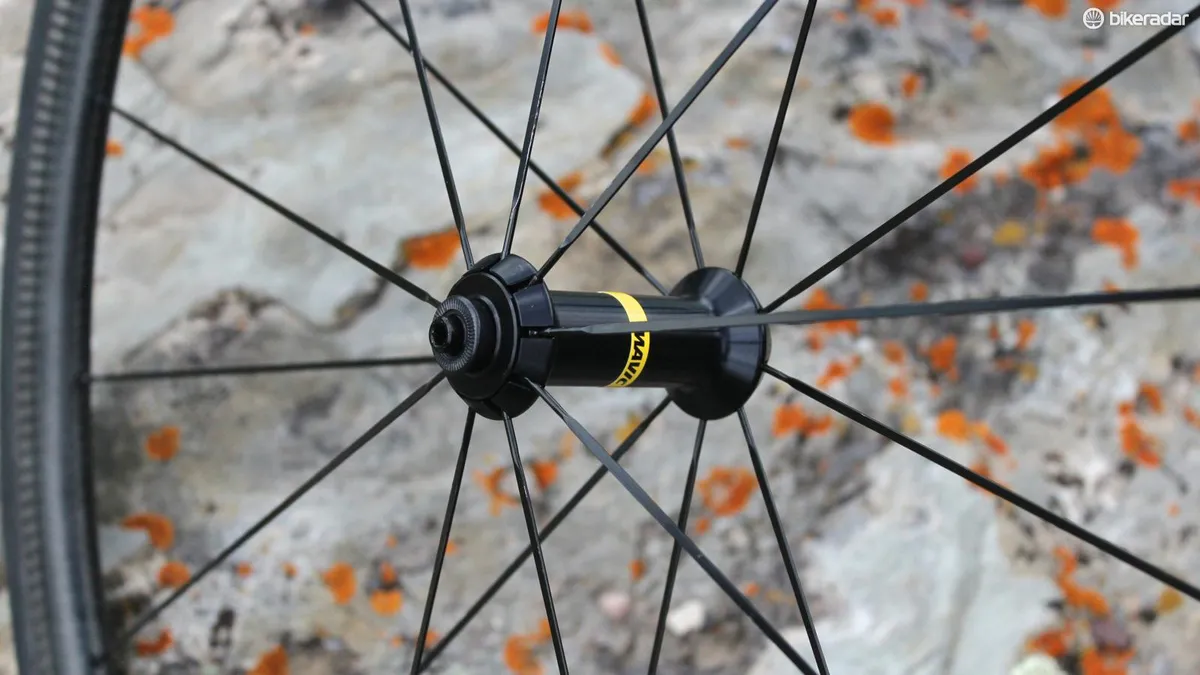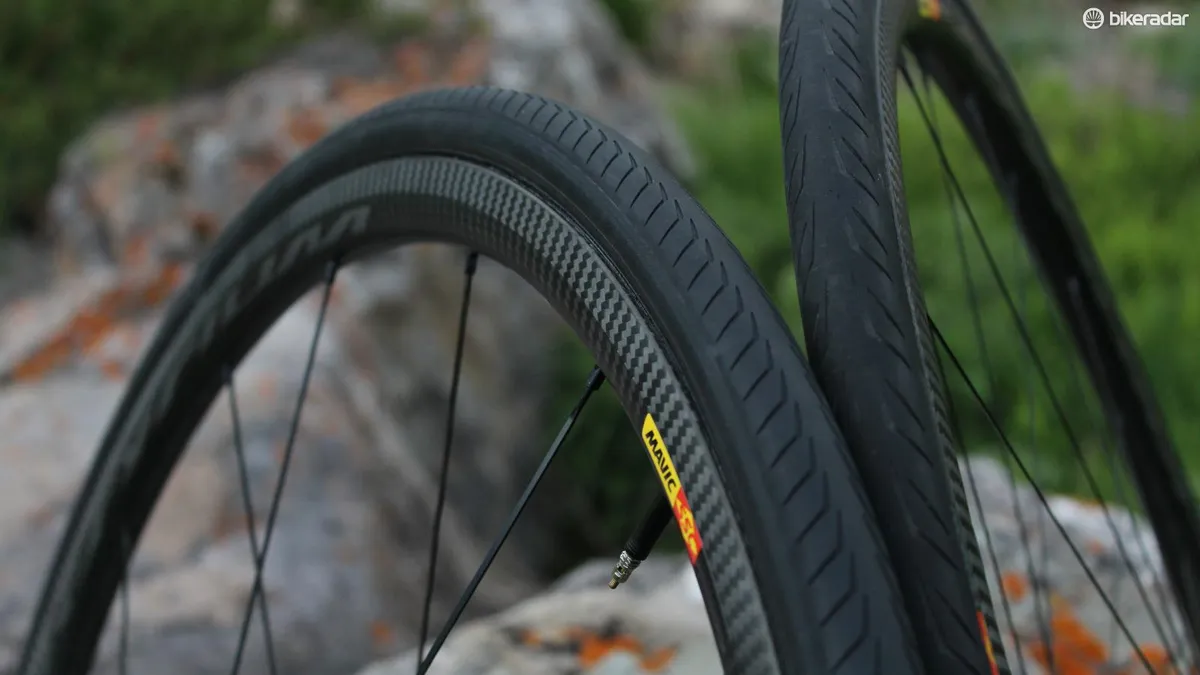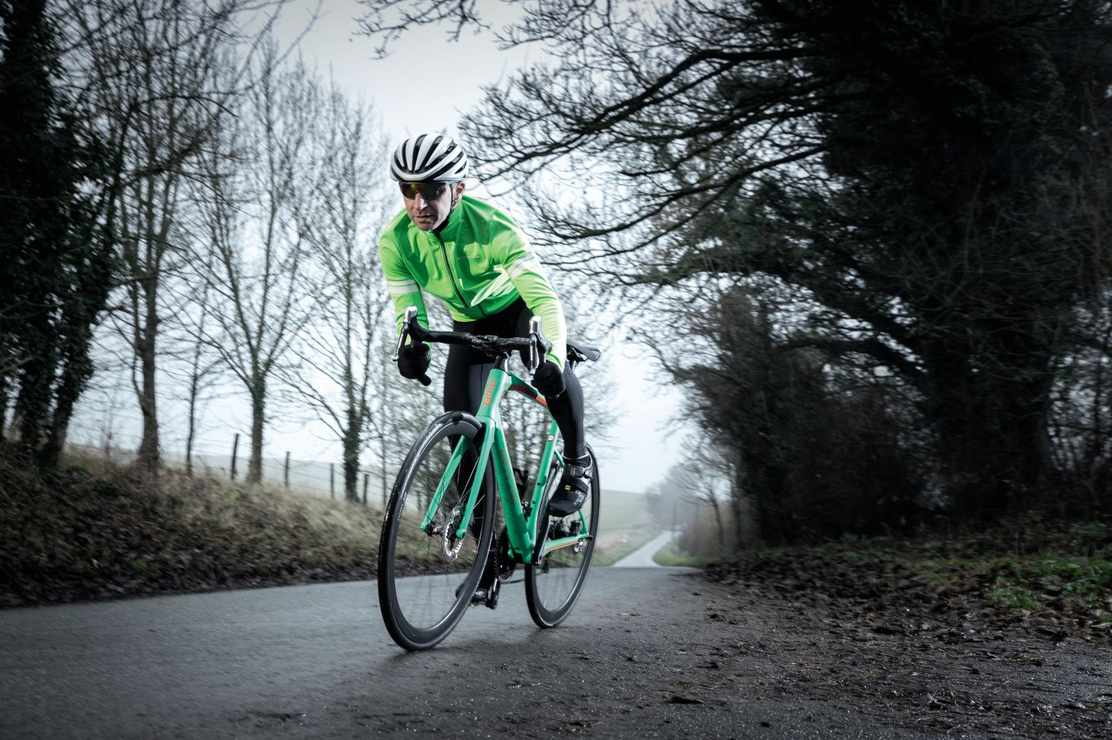Mavic’s new Ksyrium Pro Carbon SL wheels come in four configurations: clincher and tubular, with rim- and disc-brake options for each. Two BikeRadar testers rode both rim-brake models at Mavic’s launch in Wyoming, where two climbs and subsequent 50-60mph descents offered insight into the wheels’ handling.
Ksyrium Pro Carbon SL C
Negotiating the first few turns in a group and accelerating to regain the wheel in front on the clincher wheels showed the new Instant Drive 360 hub to be quick to engage. Combining that hub with super light 405g rims that build into a 1,390g wheelset makes them extremely rapid.
Considering that the rims include an 80g aluminium rim bed for added rigidity, strength and braking heat dissipation, the weight is more impressive still.
But weight isn’t everything, and by sticking with 18 front and 24 rear steel spokes, the Pro Carbon SLs offer a cultured road feel, unlike the thick alloy-spoked Ksyriums of old.
Don’t get us wrong, Mavic hasn’t sacrificed speed for comfort. These are highly accelerative wheels with more than enough zing to satisfy the racer or distance rider. But offering speed and increased durability, simpler servicing thanks to conventional spoke nipples, and fine ride quality maintains the Ksyrium’s original do-it-all nature, only with reduced weight and far greater performance potential.
So what of the downside of carbon rims – braking? The vagaries of carbon brake tracks and their often wildly different performance in the dry or wet can be a deal breaker, with reduced power, grabbing brakes and variable results.
We only got to test the new wheels on a dry day, but what Mavic calls its TgMax technology and laser prepared braking track is certainly impressive. Tg refers to the temperature at which a carbon resin overheats and enters glass transition – something you do not want, as this can mean a rim bubbling open and even a tire blowing off. Mavic claims to have developed a resin that far exceeds even the most brutal cycling parameters, and coupled with the consistently smooth braking track is said to reduce stopping distances by up to 48 percent in both dry and wet conditions.
Certainly on a fast descent, the braking delivered instant confidence, excellent modulation and fine feel. There was no squealing or grabbing, no matter how hard we braked, with just a low pitched humming sound.
It would be easy to overlook the tyres' part in all of this. Mavic designs and includes tyres with its wheels, and the 25mm GripLink front and 25mm PowerLink rear clincher weigh in at 210g each with a 127tpi casing and Kevlar front/Nylon rear puncture breakers.
These tyres proved to be leaps and bounds ahead of some previously unloved Mavic items, rolling fast and gripping impressively and progressively through fast corners. Judging by the time the central moulding leftovers wore away, and allowing for some hot tarmac, the single rubber compound could be a little softer than previous iterations. For ride feel and grip, this is a good thing.
In as much as a few hours can tell us about a wheelset, the Ksyrium Pro Carbon SL C takes the original wheel’s ethos and adds more performance to looks that are sure to appeal to the many riders who simply have to have carbon.
The Ksyrium Pro Carbon also comes in a 1,520g disc-brake version for US$2,199 / £1,350.
Mavic Ksyrium Pro Carbon SL T
We swapped wheels mid-ride from the clinchers to the tubular version (US$2,399 / £1,425). The obvious differences are the lack of hooks on the rim, and there’s no aluminium insert, since heat issues within a tubular rim are less critical. What this means is a rim weight of just 300g, built with the same straight pull, double-butted steel spokes and ID360 hub as the clincher. All-up weight is just 1,190g a pair, or 515g front and 675g rear, placing them squarely in feathery climbing wheel territory.
Rim dimensions are identical – 17mm internal, 22mm external, and 25mm tall – and each set come supplied with new 270g Yksion Pro GripLink front and PowerLink rear 25mm tubular tyres. The tread pattern uses a single rubber compound with a Kevlar breaker up front and nylon rear breaker for puncture protection, all wrapped around a 210tpi casing.
That half a pound or so reduction in rotational weight certainly made itself known from the off, with a half mile chase to regain the group feeling relatively effortless at 26mph. If the clincher wheelset’s reactivity could be adjudged as 9.5 out of 10, then the tubular is an easy 10, bordering on a Spinal Tap 11.
Small pace changes are easily matched, and sustaining speed feels a far more efficient exercise. Ride quality too is as you’d hope from a shallow rim, proving nimble and riding the bumps well.
Mavic makes no claims for aerodynamic performance, apart from pointing to the bullet-nosed profile of the new rims, and confirming that aerodynamics were a design consideration. Something relatively shallow is less likely to react adversely to gusting crosswinds, and the stability advantages of a more rounded rim shape when compared with older, narrower V-shapes is well known. We have no reason to suspect the new Ksyrium Pro Carbon shape is anything but aerodynamically stable.
A 6km climb on an old, unused and fairly broken tarmac road that varied between eight and 14 percent gradients was a sound test of climbing ability, and although the legs and lungs suffered at 8,000ft (2,400m), the tubular wheelset was always willing, kicking us forward with every extra watt we could muster. With the brake pads set reasonably close, we didn’t experience any rim rubbing for either rider (at 75kg and 84kg, respectively) when labouring out of the saddle.
As with the new clinchers, the tubular tyres are a vast improvement and very raceworthy choice. From first experience, they may not be absolutely the most supple out there, but we’d need to experiment further before stating this categorically. They're extremely grippy though and remained cut-free despite some unpaved road sections.
Taking to the wide main highway for the steep 670m/2,200ft descent, our wheels hugged the fast curves, with plenty of confident grip. Riding two different brands of bikes, we had two very different experiences on this descent.
On a (thankfully) straight section, I had a sudden onset of violent speed wobble. At 45mph, and with the gradient at -10% or more, I found myself eyeing up the barrier and the tarmac, certain I’d be meeting one very soon. Gentle braking at the rear or the front did nothing to ease it but, feeling like a passenger on a runaway bike, I negotiated an easy curve and managed to scrub enough speed to reduce the wobble a little. Even then, bringing it to a halt after around a minute was a sketchy experience, and not one I want to repeat any time soon.
The wobble almost certainly wasn’t caused by the wheels, nor by the headset suffering excess play. All indicators from combined local opinions points at a perfect storm of speed, rider weight, position and style – and mainly the frameset being ridden.
No other riders experienced such issues, including my colleague Ben Delaney who was topping 61mph on the wheels down Teton Pass.
The remainder of the ride passed without drama, allowing us to appreciate the lightweight wheels' ability to make a hard ride far more bearable and surprisingly swift.
The Ksyrium Pro Carbon SL tubulars also come in a 1,320g disc-brake version for US$2,399 / £1,425, including tyres.
